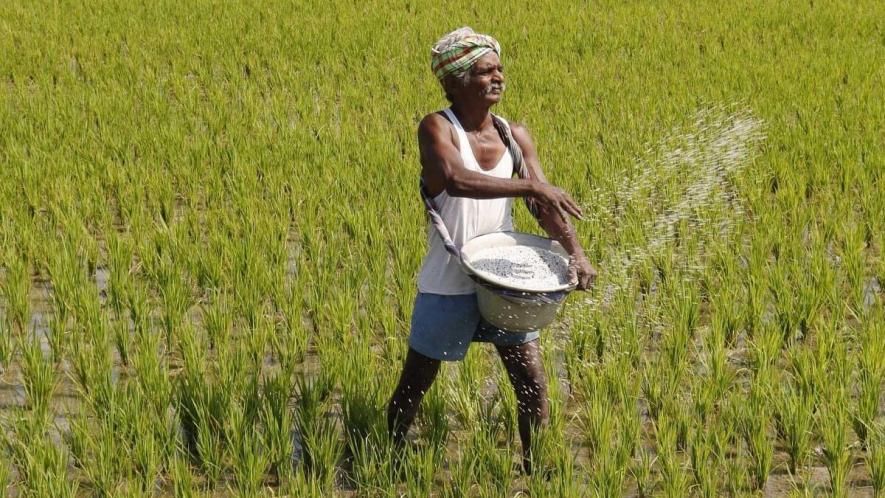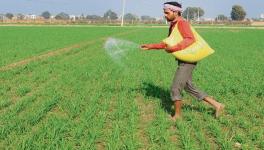Bihar: Farmers Continue Protests as Fertiliser Shortage Persists Into Rabi Season

Image Courtesy: The New Indian Express
Patna: Even days after the rabi sowing season ended, thousands of farmers are still struggling for diammonium phosphate (DAP) and urea due to shortage and continued protest on roads demanding the government to ensure supply. The fertiliser - DAP and urea are widely considered essential for rabi crops by the farmers.
Angry over an acute shortage of DAP and urea, farmers took to the streets on Thursday and Friday in nearly one dozen districts. They staged protests by blocking roads including national highways, organised demonstrations and at a few places clashed with police.
As per reports reaching here, farmers have been protesting against the shortage of fertiliser and black marketing in Araria, Madhepura, Supaul, East Champaran, Sasaram, Bhojpur, Siwan, Saharsa and Munger. “We have been demanding an adequate supply of fertiliser and protesting shortage since November. But the situation has not changed and farmers are forced to continue protesting by the end of December for fertiliser. The government has failed to provide us with fertiliser. The concerned officials have time and again assured to end the fertiliser shortage that proved futile so far,” said Surajdeo Mandal, a marginal farmer of Narpatganj in Araria in the Seemanchal region, known for a large scale winter maize cultivation.
Mandal said police had opened fire and tear gas to disperse the protesting farmers. It was the first time that police acted in such a way. Unhappy farmers have been protesting the shortage of fertiliser for more than a month in different blocks in the district.
According to police officials in Araria, a few police personnel were injured in a clash with the protesting farmers on Thursday.
Similarly, farmers have been staging protests in different parts of other districts including East Champaran, Siwan, Madhepura, Supaul, Saharsa. Farmers in Piro in Bhojpur and Hussainganj in Siwan staged protests against fertiliser dealers and black marketing. Hundreds of farmers have complained that a shortage of fertiliser delayed sowing the Rabi crops that will affect their quality and production. Farmers across the state also protested during the Kharif season earlier this year due to a shortage of urea.
Last month state agriculture minister and senior BJP leader Amrendra Pratap Singh had demanded from the Centre supply of 1 lakh metric tonnes (MT) of DAP soon while admitting that the supply of the fertiliser is inadequate in view of the high demand. Farmers refused to listen to Singh’s advice of using single super phosphate (SSP) instead of DAP.
According to state agriculture department officials, 4 lakh MT of DAP is required for the Rabi season. Two months ago, the department wrote to the Centre asking for a supply of DAP and other fertilisers ahead of the beginning of Rabi season. “After an assessment of the requirement of DAP and other fertilisers, the department had asked the Centre to ensure timely supply to avoid shortage.”
As per the department’s assessment, 12 lakh MT of urea, 1.5 lakh tonnes of MOP (muriate of potash), 2 lakh MT of complex (mixture of nitrogen, phosphate and potash) and 1.25 lakh MT of SSP are also required.
After repeated floods and excess rainfall destroyed standing Kharif crops in thousands of hectares, farmers had to struggle with the shortage of fertilisers and a soaring black market. Left with no option, they were forced to purchase a few sacks of fertilisers at higher prices in the black market to salvage their remaining crops.
The DAP crisis, which started way back in July, has worsened, exposing the lack of seriousness of the Nitish Kumar-led government in ensuring the supply of fertilisers from the Central quota. The frustrating situation has forced farmers to stage protests, block roads, gherao government officials and even clash with the police in some places.
Agriculture is the backbone of Bihar’s economy employing 81% of the workforce and generating nearly 42% of the state’s gross domestic product, according to state government figures. About 76% of Bihar’s population is dependent on agriculture for livelihood.
Get the latest reports & analysis with people's perspective on Protests, movements & deep analytical videos, discussions of the current affairs in your Telegram app. Subscribe to NewsClick's Telegram channel & get Real-Time updates on stories, as they get published on our website.























